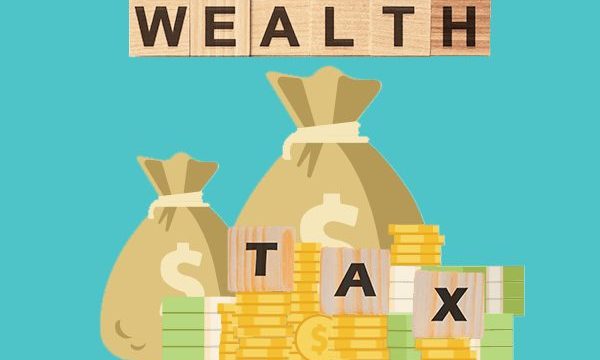Rethinking the Role of Monetary Policy in a Fair Economy
Introduction
Interest rates are often portrayed as the all-powerful lever for managing economic growth, inflation, and stability. From central bank decisions broadcast across financial news to homeowners nervously watching mortgage rates, interest rates influence everyday life. But how justified is our collective faith in this tool? Are interest rates effective in creating a fair and prosperous economy, or have they become a mechanism for perpetuating inequality and financial manipulation?
This article takes a critical look at the role of interest rates in modern economies, examining their purported benefits and overlooked drawbacks. We challenge the assumption that raising or lowering interest rates is a neutral or universally beneficial tool. Instead, we explore whether the current reliance on interest rate policy has become an economic myth and propose radical alternatives, including fiscal tools and Modern Monetary Theory (MMT), to address systemic issues of wealth inequality, growth, and stability.
The Traditional Role of Interest Rates
- Monetary Orthodoxy
Conventional economics teaches that central banks use interest rates to influence demand. Raising rates slows borrowing and cools inflation, while lowering rates encourages spending and investment. This view is central to inflation targeting policies adopted by most Western economies since the 1990s.
- The Real-World Impact
In practice, interest rates influence mortgages, credit card debt, business investment, and exchange rates. They also have a major psychological impact on consumer confidence. However, their efficacy as a tool for managing inflation is increasingly questioned, especially when inflation is driven by supply-side shocks (such as energy prices) rather than consumer demand.
- The Wealth Effect
Interest rate adjustments disproportionately affect asset holders. When rates are low, asset values — especially housing and stocks — inflate. This benefits those who already own assets, widening the wealth gap. When rates rise, poorer households bear the burden through increased debt service costs.
Interest Rates as a Tool of Inequality
- Household Debt and Mortgage Exposure
In the UK, most households are heavily exposed to interest rate changes via mortgages. Recent rate hikes have pushed millions closer to the brink of insolvency. Meanwhile, wealthier households with fixed-rate or no mortgages are shielded from these effects.
- Business Investment and the Cost of Capital
Small businesses, which often depend on credit lines or loans, are disproportionately affected by rate increases. In contrast, large corporations with cash reserves or access to equity markets are less sensitive. This distorts market competition in favour of entrenched players.
- Pensions and Financial Speculation
Low interest rates have pushed pension funds and institutional investors into riskier assets to meet return targets. This has fuelled financial speculation and asset bubbles, contributing to economic instability rather than security.
Interest Rate Manipulation and Its Critics
- The Illusion of Neutrality
Interest rate changes are often portrayed as technocratic decisions. Yet their political implications are profound. Rate decisions can benefit certain groups (like banks and investors) while hurting others (like renters and first-time buyers).
- The Political Economy of Rates
Central banks, though officially independent, are influenced by political and financial elites. This raises concerns about whose interests are truly being served by monetary policy. The Bank of England, while nominally autonomous, must ultimately be accountable to the people through Parliament. A true democracy requires that monetary decisions reflect the public interest, not the preservation of elite power.
- The Myth of Market Discipline
Proponents of interest rate-based discipline argue it forces governments and households to “live within their means.” But this ignores the fact that rate adjustments are often blunt, regressive, and detached from the real causes of economic dysfunction.
Breaking the Model — Innovative Alternatives
- Decoupling Mortgages from Private Banking
A radical shift is needed. Mortgages should no longer be the domain of profit-driven private banks. Instead, a National Public Mortgage Bank could offer low-cost, fixed-rate mortgages focused on affordability, not profit. Such an institution would ensure housing is treated as a human right, not an investment commodity.
- Bringing Money Creation into the Public Realm
Currently, most money in circulation is created by private banks through lending. This model prioritises profit over public purpose. Monetary reform must include democratic control over money creation, ensuring it serves community development, public services, and infrastructure.
- Truth and Transparency in Economic Policy
Governments must stop perpetuating myths about public finances. The public deserves honest education about how money works. Money is not a scarce commodity owned by the elite; it is a public utility — like energy, air, and water. It should be distributed fairly and used to build inclusive prosperity, not hoarded by the few.
- Education for Economic Empowerment
Financial literacy must be taught in schools as a core subject. Citizens should understand credit, debt, inflation, and the monetary system. Empowered with this knowledge, they will be better equipped to challenge economic myths and hold policymakers accountable.
- Cracking Down on Debt Exploitation
High-interest debt, from credit cards to payday loans, traps the most vulnerable in cycles of poverty. Regulation must cap interest rates on personal loans and prohibit exploitative lending practices. Financial inclusion, through public banking and accessible credit unions, must replace parasitic debt industries.
Toward a Democratic, Post-Interest Rate Economy
- Fiscal Policy as the Primary Economic Tool
Governments should lead with fiscal policy — targeted spending, infrastructure, job programs, and services — not monetary manipulation. This creates real value, jobs, and stability.
- Modern Monetary Theory (MMT) and Job Guarantees
MMT envisions a world where public purpose drives policy. A universal job guarantee would stabilize employment, provide meaningful work, and replace unemployment as a policy tool. Inflation is managed by real resource constraints and progressive taxation, not artificial scarcity created by interest rates.
- Public Banking and Sovereign Credit
Public banks can finance green infrastructure, housing, and small businesses at low cost. Sovereign credit, directed transparently and democratically, is a cornerstone of post-interest rate economics.
- De-Commodifying Essential Needs
Housing, healthcare, education, and utilities should not be subject to market whims. Public provision and investment in these areas ensure access and affordability. This breaks the link between interest rates and life essentials.
- Institutional Reform
The Bank of England should report regularly to Parliament and the public. Monetary decisions should be scrutinised in open forums, with diverse input from economists, civil society, and the general public. Economic governance must serve democracy, not technocracy.
Now Is the Time for Change
No government in history has fully tackled the exploitative nature of debt, the mystification of interest rates, or the inequality built into our financial systems. That must change. Money is not magic or mysticism — it is a tool, and tools can be used for justice or oppression.
We must move beyond the myth that interest rates are the only lever for economic management. A fair economy centers on human wellbeing, ecological sustainability, and shared prosperity. This requires public control over money, financial truthfulness, universal financial literacy, and the end of debt-driven inequality.
Now is the time to be bold. The current system is not inevitable. A better, fairer, and freer economic model is possible — if we are willing to build it.






